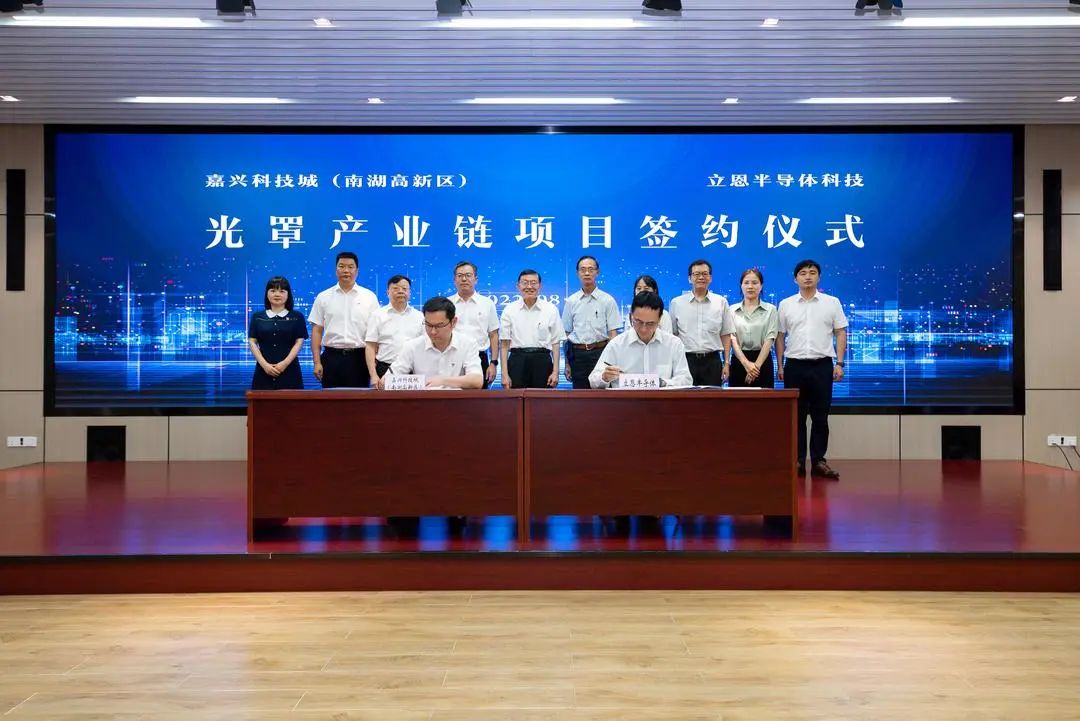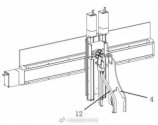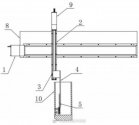Well, a crisis for some is an opportunity for others, if nobody uses your product it will always be "inferior" because without customer feedback there is no possibility of improvement.The quality of domestic equipment may not be on par with foreign products. Inferior equipment may produce inferior or more costly products, which become less competitive in the market place.
The Hegemon’s ban levels the Chinese market since everyone has to use the domestic equipment
You are using an out of date browser. It may not display this or other websites correctly.
You should upgrade or use an alternative browser.
You should upgrade or use an alternative browser.
Chinese semiconductor industry
- Thread starter Hendrik_2000
- Start date
- Status
- Not open for further replies.
CanSemi starts phase III project as China's chip companies advance
Guangzhou CanSemi Technology Inc started phase III construction of its semiconductor project on Thursday in Guangzhou, South China's Guangdong Province, with an investment of 16.25 billion yuan ($2.4 billion), China Central Television (CCTV) reported.
The new phase will generate production capacity of 40,000 wafers per month, with products focusing on industrial and vehicle chips, CCTV reported.
CanSemi is the only 12-inch wafer maker that has entered mass production in Guangdong Province. According to the company, its capacity will ramp up to 80,000 12-inch wafers per month after all three phases of the project are completed, aiming to provide power management chips, mixed-signal chips and others for Internet of things (IoT) applications and the automotive market in the Greater Bay Area.
A total of 37 billion yuan will be invested in the three-phase semiconductor project. The first and second phase projects have been completed and put into operation, the company said.
The project's phase I focuses on 180-90 nanometer (nm) lithography processes, and phase II focuses on 90-55nm, while phase III will be 22nm, according to the company's website.
Beijing-based chip maker Hercules Microelectronics on Thursday launched a new product - H3C08 - which is the first domestic FPGA chip based on the 22nm lithography process that has successfully entered mass production, according to a statement the company released via its WeChat account.
SMIC to keep long-term capacity expansion plans unchanged
China's top foundry Semiconductor Manufacturing International Corp (SMIC) has decided not to change its long-term capacity expansion plans despite volatile market environments, sparking market concerns, according to industry sources.
With the rapidly spreading price falls and order cuts triggered by a sharp reversal in demand for consumer applications, many global foundries and IDMs are re-assessing whether to reduce or slow down their planned capacity expansions, the sources said.
But SMIC co-CEO Zhao Haijun has said at a recent international investors conference that the company will not alter its long-term capacity expansion plans and will maintain a consistent investment density in the years ahead, reasoning that SMIC is optimistic that domestic foundry business prospects will remain bright as localized chips production will continue to gain momentum.
Major PC chips vendors such as Intel and AMD have successively released pessimistic performance reports and business projections, warning that the IC industry may face a broader and more severe demand slowdown than expected. In response, Zhao said in the first half of 2022, the IC industry was affected by a double cycle overlap, generating panic and uncertainty in the markets, and some supply chain segments even suffered a quick business freeze.
Nevertheless, Zhao stressed the regionalization trend will remain unchanged worldwide, and SMIC remains optimistic about its business growth over the medium and long term, bolstered by the ever-growing localized chips production momentum in China.
Also braving market headwinds, China's top-2 foundry Hua Hong Semiconductor is proceeding with regular capacity expansions as well. Its president and executive director Tang Junjun has said that additional capacity at its 12-inch wafer fab in Wuxi, Jiangsu province will be commercialized in early 2023 when the plant's monthly capacity will increase to 95,000 wafers from 65,000. He also noted the company plans to build more fabs in the future, and the actual construction progress will hinge on delivery lead times for related equipment.
Well, I think the issue is that domestic suppliers haven't fully ramped up yet, so they will still need to buy Western technology. If American suppliers can't provide after sale support, then every fab in China will want to move away from American suppliers as soon as possible.
What a disastrous and ridiculous policy by this stupid administration. It's like they are trying to kill successful American companies.
Honestly I am a bit dubious about this rumor.
I for sure believe that US administration is well capable of doing anything, even the most disruptive actions. But this seems to me a really absurd and desperate move.
I mean, the only company in China that has FinFet technology in production is SMIC. So to target FinFet it means to target SMIC. At this point just do it directly. US could invent some official excuse out of thin air and totally ban SMIC, like they did for Huawei.
But to forbid post-sales assistance and mainteinance on US tools already installed and in production, it really means to completely destroy what remains of US companies credibility. Not only for today, but for the future too.
On the China side the only affected firm would be SMIC and only for 14nm and 7nm nodes, on US side instead AMAT, LAM Research and KLA can say goodbye to Chinese market....maybe this is the real target of US administration.
It also would be an ineffective move, as many of these tools have local 3rd party servicing companies. How do they think analog fabs get service for used tools? These are neither illegal nor shady, they are well known as a key part of how this very expensive equipment stays active for decades after the manufacturer no longer supports them.Honestly I am a bit dubious about this rumor.
I for sure believe that US administration is well capable of doing anything, even the most disruptive actions. But this seems to me a really absurd and desperate move.
I mean, the only company in China that has FinFet technology in production is SMIC. So to target FinFet it means to target SMIC. At this point just do it directly. US could invent some official excuse out of thin air and totally ban SMIC, like they did for Huawei.
But to forbid post-sales assistance and mainteinance on US tools already installed and in production, it really means to completely destroy what remains of US companies credibility. Not only for today, but for the future too.
On the China side the only affected firm would be SMIC and only for 14nm and 7nm nodes, on US side instead AMAT, LAM Research and KLA can say goodbye to Chinese market....maybe this is the real target of US administration.
Here's a US one:
Chinese ones:
I mean, the only company in China that has FinFet technology in production is SMIC. So to target FinFet it means to target SMIC. At this point just do it directly. US could invent some official excuse out of thin air and totally ban SMIC, like they did for Huawei.
Even if sanctioning SMIC and banning FinFET to China is 100% equal, banning FinFET makes a better narrative for them. They can say they didn't target a specific company.
But I don't think banning FinFET equipment to China is equal to just sanctioning SMIC even now. SMIC may be the only fab currently producing FinFET, but likely there are other Chinese fabs working on FinFET at various stages of progress. For example as per previous road-maps Huahong is also supposed to have FinFET by now. And what about the foreign fabs in China that have or may want FinFET.
From previous US policies it is clear they are not just after SMIC. They are after China. They don't want any Fab in China, be it Chinese owned or foreign owned, developing advanced nodes. It has already been proven that they are willing to do this even to the detriment of Chinese fabs owned by their own allies such as TSMC and Samsung. For example EUV is not just banned for Chinese owned companies. It is for any fab operating in China and the recent Chips Act forbids the companies that receive their funding from developing advanced nodes in China.
Not only that, some of this third party companies with the experience they get they could become long term parts provider themselves and i some case equipment providers.It also would be an ineffective move, as many of these tools have local 3rd party servicing companies. How do they think analog fabs get service for used tools? These are neither illegal nor shady, they are well known as a key part of how this very expensive equipment stays active for decades after the manufacturer no longer supports them.
Here's a US one:
Chinese ones:
like this company.
In a recent interview they said they have a patent for RF power supply the overcome some of the shortcomings of current models.
Man I love the American company motto. The triple dots look almost comical.It also would be an ineffective move, as many of these tools have local 3rd party servicing companies. How do they think analog fabs get service for used tools? These are neither illegal nor shady, they are well known as a key part of how this very expensive equipment stays active for decades after the manufacturer no longer supports them.
Here's a US one:
Chinese ones:
Led by Zhang Rujing, the 3 billion yuan mask material industry chain project was signed and settled in Jiaxing
Jiwei.com news, on August 19, the signing ceremony of the photomask material industry chain project with a total investment of 3 billion yuan was held in Zhejiang Jiaxing Science and Technology City (Nanhu High-tech Zone) Zhicufang. The project leader Dr. Zhang Rujing attended the signing ceremony.

Zhang Rujing said that with the rapid development of the semiconductor industry, the market demand for photomasks as a key raw material for chips continues to rise. At present, the photomask material industry chain is seriously monopolized by foreign countries, and some products are completely dependent on imports, especially photomask protective films. At present, only a few overseas manufacturers are capable of producing them, and the domestic technology in this area is still blank. This project aims to become the leader of upstream materials for photomasks in China.
It is reported that the total investment of the photomask material industry chain project is 3 billion yuan, and the first phase investment is 1.1 billion yuan. It will be settled in the Integrated Circuit Industrial Park of Nanhu High-tech Zone, mainly engaged in the research and development and manufacture of products related to the photomask material industry chain. The project is scheduled to start in September this year.
- Status
- Not open for further replies.


